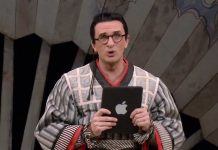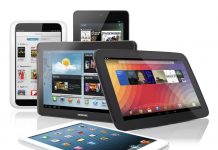 Today I took in a panel presented by Peter Hildick-Smith, the President and founder of the Codex Group. Codex is in the habit of running a monthly survey of 5,000 book purchasers about their book purchasing habits of the last month, and has been doing so for over ten years. A number of Hildick-Smith’s prior pronouncements have been controversial, and this particular panel is no exception.
Today I took in a panel presented by Peter Hildick-Smith, the President and founder of the Codex Group. Codex is in the habit of running a monthly survey of 5,000 book purchasers about their book purchasing habits of the last month, and has been doing so for over ten years. A number of Hildick-Smith’s prior pronouncements have been controversial, and this particular panel is no exception.
I didn’t take the best notes, and I don’t have the slide deck—Hildick-Smith said he’d email it to me, but he hasn’t yet and may well not do so until after the show. When he does, I’ll see if I can make it available for download as part of this article. But I think I got enough to hit the high notes, even if I may not fully cover every nuance.
Hildick-Smith started out by noting that of all the major digital media—music, home video, and books—books represent the only medium wherein the rate of digital adoption has faltered. In 2012, e-books were predicted to reach 50% of the book market by 2015—but instead, they seem to have stalled out at about 20%. Almost 60% of readers say they prefer print books, and e-tailer browsing discovery share hasn’t changed much over the last five years.
Why? Well, there’s an interesting thing. Even though book buyers spend a lot of personal time on screens—on average, 4.7 hours the day before they took the survey—25% of them say they want to spend less time on digital devices. They cite reasons such as the devices being “too addictive,” or wanting to spend more time on in-person or family activities in the “real world.” Eye strain is a factor, too—but whereas the prior reasons have ranged from 47% to 69%, only 7% cited budgetary concerns as a reason, so it’s obviously not related to money matters.
What’s more, Codex has been seeing a decline in the number of people who say they read e-books and the number of e-books they purchase over the last three years. It seems to be just a slight decline, but still, the numbers are down. Hildick-Smith explicitly pointed out this isn’t a question of AAP stats that leave out independent e-books, because these stats were gathered by talking directly to people who purchased e-books of any kind.
When asked, most of the people who were reading fewer e-books simply said they preferred print books. Other reasons they gave involved eyestrain, or simply not liking the e-reading experience. The same reasons largely held true for people who didn’t read e-books at all.
But the most interesting part of the data involved e-ink readers. According to Codex’s data, only 33% of book-buying households they surveyed owned e-ink readers. 73% owned smartphones and 67% tablets. And those e-reader numbers had remained steady over the last four years, while tablet and smartphone numbers rose from 2013 to 2015 then dipped in 2016. But for all that fewer people have them, in terms of the total time spent reading e-books on them, e-ink readers represent the overall majority of time spent—55%, where tablets come in at 28%, smartphones at 12%, and laptop or desktop PCs 6%.
Furthermore, the numbers showed that e-reader owners buy the largest share of their books electronically. Those who owned e-readers alone bought 47% of their books electronically, on average. Those who owned e-readers and tablets bought 44% electronically. Tablet owners with no e-reader bought 38%, and smartphone owners with no e-reader only 13%. Another slide showed e-reader owners bought 70% more e-books than people who just owned a tablet—and those who owned an e-reader and a tablet bought over twice as many.
So, effectively, Codex’s stats suggest that e-ink readers drive the majority of e-book purchases. People who own them simply read more and buy more. But Hildick-Smith notes that Amazon seems to be moving its emphasis away from e-books in favor of broader compatibility with the Amazon ecosystem. Rather than trying to reduce the price of e-readers further, to sell more of them and get more people reading e-books, Amazon has come out with a $300 e-reader that will please the more affluent members of the e-reader-buying crowd but won’t get more new people into using them.
What Amazon has cut the price on are its Fire tablets, which aren’t as conducive to reading but do encourage their owners to buy more music, movies, and games. And those Fire tablets cost significantly less than even the cheapest, most feature-light e-ink reader. Apparently Amazon is more interested in getting readers invested in the rest of the Amazon ecosystem than in selling more e-books.
As a result, Hildick-Smith predicted that e-books’ market share could fall further over the next few years—perhaps dropping to 15% while print rises to 85%. If Amazon were to do something to make e-ink readers more attractive, such as figuring out how to cut the price to below the Fire’s, that could change—but he sees no sign Amazon is interested in moving in that direction.
This wasn’t the only development Hildick-Smith had to report, however. He also touched upon book and e-book discoverability. The survey showed the 22% of books customers bought had been discovered by browsing in a print bookstore—while only 5% had been found while browsing online stores. Also, far and away the greatest number of impulse buys happened at stores—in fact, 78% of books bought at big-box stores like Wal-Mart or Target were impulse buys, while only 62% of purchases from physical bookstores were impulse buys but only 37% of online purchases were on impulse. Even Amazon is taking notice of this, given its moves toward opening physical bookstores.
But one of the really interesting points came about when Hildick-Smith proposed to explain the popularity of the Twilight novels. He began by noting that there was a Pareto Principle-like distribution in which about 20% of consumers were responsible for about 80% of books read in a year. These readers tend to be the ones that most marketing efforts pursue.
But there was another group of readers who account for about 20% of book buys. This group makes up 35% of consumers. (The remaining 45% didn’t read any books in the last 12 months.) It is that 35%, Hildick-Smith suggests, that accounts for the unexpected success of blockbusters that catch their interest.
Hildick-Smith notes that that 35% number is very similar to another middle-of-the-road chart percentage–the literacy pyramid. Only 13% (32 million) of adults are rated as fully proficient in literacy. Meanwhile, 44% (109 million) readers only have intermediate literacy skill.
The interesting thing about Twilight and other young-adult books is that they tend to have a level of popularity that spans all ages. Significant numbers of readers over 18 say Stephanie Meyer is one of their favorite authors. Hildick-Smith sees this popularity as coming from the fact that these books are written at a level that appeals to those frequently-overlooked “intermediate” readers, given that they’re aimed at teenagers who might be expected to be only “intermediate” themselves. Finally, he brings up a chart showing that large numbers of young-adult blockbuster titles (ranging from 35% to 52% of unit sales) were purchased at big-box stores—the sorts of places where these casual book buyers go to shop.
If publishers want to sell more books, he suggests, they need to target these casual readers where they shop, paying more attention to placing books in big-box stores where casual readers shop. Meanwhile, e-book sales are gradually going to decline as e-reader market share does.
Hildick-Smith summarizes what he sees as the future of print vs. e-books in three points:
- eReader Device Decline—Print Growth
- Physical Bookstore Expansion
- “Blockbuster” Book Buyers Are Waiting!
I’m not entirely sure I believe all the core points, but what better data is there? Given that the biggest players in the e-book industry are not inclined to release their own demographic data, everyone else has to do the best they can with surveys and whatever other information they can gather. Not only does it seem to come down to the equivalent of reading tea leaves, sometimes the tea leaves don’t even agree with each other!

































> of all the major digital media—music, home video, and books—books represent the only medium wherein the rate of digital adoption has faltered
I’ve always believed that books were different to music and movies in at least one respect. Namely that music and movies require some kind of device even in their physical form – whether it’s a record deck, DVD player, tablet or whatever.
Because of this necessity, ownership of those devices is very high and taken as normal. So CDs, DVDs, etc. can be gifted with a reasonable expectation that the recipient will be able to play them and transitioning to a different kind of device isn’t such a radical change.
A physical book is entirely self-contained but an ebook isn’t.
Add in vendor lock-in by various means – notably format and DRM – and you have some significant brakes on the widespread adoption of ebooks over physical books.
That doesn’t mean it won’t happen but it adds to the challenges.
This sounds like a case study in confusing correlation with causation. I’ll focus on one in particular:
“So, effectively, Codex’s stats suggest that e-ink readers drive the majority of e-book purchases. People who own them simply read more and buy more. But Hildick-Smith notes that … Rather than trying to reduce the price of e-readers further, to sell more of them and get more people reading e-books, Amazon has come out with a $300 e-reader that will please the more affluent members of the e-reader-buying crowd but won’t get more new people into using them.”
But perhaps the causation moves in the opposite direction? Maybe people who read lots of ebooks are somewhat more likely to use e-ink readers than phones and tablets because even marginal improvements in the reading experience become significant to the more prolific readers. In that case, the appropriate response for Amazon would be to try to up-sell those committed readers to more expensive (and presumably more profitable) devices — hello, Oasis!
Truthfully, I suspect the causation isn’t even one-way. It’s probably more of a mutual reinforcement. People who read lots of e-books are more likely to use e-ink devices than people who don’t. People who use a Kindle find buying e-books convenient and so buy more of them.
Quote: “Hildick-Smith started out by noting that of all the major digital media—music, home video, and books—books represent the only medium wherein the rate of digital adoption has faltered.”
One quick listen or listen explains why. For digital music and video, the user’s experience is virtually the same for digital versus physical media. For an illustration, if someone brought you into a room in which music was playing on a stereo and a movie on a TV, would you be able to tell if that music or video was streaming digital or from a CD/DVD? Chances are you wouldn’t. Even YouTube videos streamed over my slow-and-cheap broadband connection look fine if professionally done.
Now do the same comparison between a popular print book from major publisher and the digital version of that same book. The difference is like night and day. Professional done, print books look marvelous and can handle even complex formatting. In contrast, some 15+ years into ebooks, ebooks still look worse than webpages looked in 1995, only a couple of years into the Internet revolution.
Ebooks aren’t growing more popular because ebooks are ugly. It is that simple. Even worse, with but one exception, nothing can be done about that. The standards (epub, mobi, and KF8) are awful and don’t allow ebooks to be attractively done.
And behind much of the problem is the vile Palm Pilot Syndrome (PPS). When ebooks first began to appear on Palm devices, their appearance on that tiny LCD screen was awful. Seeking to make the best of a bad idea, much was made of the fact that someone could change the font size. Yeah, you could choose to have that ugly book in a little font size or a large one, as if that made something bad into something good.
PPS then locked the ebook creating and reading mentality into various bad ideas:
1. Ugly is OK. Ugly is normal. Ugly is not to be fixed. Ugly is.
2. The reader determines the formatting not the publisher. Yeah, that meant they get to change one ugly to a different ugly, including later changing the font rather than the font size. People like that? When I get a book, I want to read it not klutz with how it looks.
3. Mindless, utterly mindlessly reflowing text was king. Pages break halfway down because the inline graphic won’t fit onto the current page. Windows and orphans—having a lone word in a paragraph appear by itself on a separate page was not even thought to be wrong. There’s no intelligence in how any text is handled when the display size changes. Change your reading from a small smartphone to a large tablet and a little ugly ebook becomes a large ugly ebook.
4. Many of the woes of ebooks are the result of a mindset that thinks that display coding that handles a webpage that scrolls down can be mindlessly adapted for ebooks where readers page through a book. Webpages don’t have to display any intelligence in page breaks because there are none. Therefore, ebooks can break pages any old way, however ugly. It’s a bit like thinking you can turn a car into a plane by adding boards on the sides to give it “wings.”
The one exception is fixed layout epub. It does allow for the creation of ebooks that, if the formatting software is sophisticated enough, look virtually identical to their print counterpart. You can see an example here. Click on the right to page though the book:
https://indd.adobe.com/view/c1892142-ecf8-4621-a7a9-eee8f0ce19ab
It looks good doesn’t it? Nothing like the typical ugly ebook. In fact, it looks identical to the carefully formatted print version. But to do that, I am told, Adobe has to code in HTML the placement of every single word on the page. That’s why it takes complex software like InDesign to do it. There’s no smarts at the reader end to make the text attractive without complex, source-end encoding.
And the result only works with certain display sizes. The version you are looking at was formated for a 6×9 inch book. It looks fine on computer displays and the larger tablets. It probably looks OK on smaller tablets with sharp screens. But there is no way you could read it on a small smartphone screen. Fixed layout looks good, but the layout is fixed. There is no way to layout an ebook of varying size so it looks attractive no matter what the display size. There’s no way for someone doing layout to tell an ereading application how to make text attractive on any sized screen.
To give a for instance about what that means, almost any book but a novel needs to be able to distinguish paragraph-length quotes from the main body text. Print books typically do that by insetting the text a small distance. That will work on large tablets. It utterly falls apart on a small smartphone screen. The width is already so small, that the lines of an inset quote will only have 2-3 words and look—here’s that word again—ugly.
Smart ebook layout coding and ereaders wouldn’t always indent text. They will do different things to set that quote off depending on the display size. The layout encoding will say “this is a quotation” and the ereader software would be smart enough to indent it on large screens and treat it some other way on a smaller screen. It might tint the background. It might put a line alongside the left edge of the paragraph. Whatever, it would know how to handle text on a 4″ screen intelligently different from that on a 9″ screen. It’s that sort of thing you need to fight the ebooks are ugly syndrome.
And it is that which isn’t happening. If anything, I’m picking up ugly signals from the ebook standards makers that what they really want to do is create “rich text” ebooks, which is a euphemism for cluttering ebooks with the same auto-play videos and hyperactive ads that make many webpages a pain to visit. Change isn’t going to be driven by what’ll make ebooks more attractive. Change will be driven by what makes it easier to litter books with irritating ads.
Books, you might realize, are one of the few areas of life where we can entertain ourselves free of incessant ads. We need to protect that.
–Mike Perry, Inkling Books
[…] Teleread covered the same story last month as part of their coverage of BEA 2016; they have a different selection […]